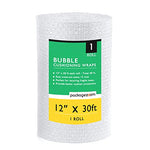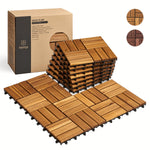You have no items in your shopping cart.
Unveiling the American Giant Millipede
Welcome to the intriguing realm of the American Giant Millipede, a captivating creature found in the moist forests of North America. Known for its distinctive appearance and fascinating behaviors, this magnificent millipede is a testament to the wonders of nature. In this article, we will embark on a journey to unravel the secrets of the American Giant Millipede, exploring its habitat, physical attributes, behaviors, and more. So, without further ado, let's dive in!
American Giant Millipede: A Closer Look
The American Giant Millipede (Narceus americanus) is a species of millipede native to the eastern regions of the United States and Canada. As the name suggests, it is renowned for its size, growing up to 4 inches in length, making it one of the largest millipedes in North America. This captivating creature boasts a dark brown exoskeleton segmented into numerous body sections, each adorned with a pair of legs.
Physical Attributes: What Makes Them Stand Out?
When it comes to the physical attributes of the American Giant Millipede, several features set them apart from other millipede species:
- Body Structure: The American Giant Millipede has a cylindrical body, divided into approximately 30 to 40 segments, each with two pairs of legs. This results in a total of 60-80 legs, giving the millipede an unmistakable appearance.
- Coloration: Their exoskeleton exhibits a dark brown coloration, providing them with excellent camouflage in the forest floor's leaf litter.
- Size: Growing up to 4 inches in length, the American Giant Millipede is an impressive creature that commands attention.
Habitat: Where Do They Call Home?
The American Giant Millipedes thrive in the damp and dark microhabitats found in the forests of eastern North America. They are commonly found in wooded areas with rich leaf litter, decaying logs, and moist soil. These millipedes play a crucial role in the ecosystem as they help break down decaying organic matter, recycling nutrients and contributing to the soil's health.
Behaviors and Lifestyle: A Peek into Their World
Let's take a closer look at some intriguing behaviors and aspects of the American Giant Millipede's lifestyle:
1. Curling into a Defensive Ball
The American Giant Millipede has a unique defense mechanism. When threatened, it can curl its body into a tight ball, protecting its softer undersides from potential predators. This behavior is an effective deterrent against many predators in their natural habitat.
2. Secretive Nocturnal Wanderers
These fascinating creatures are primarily active at night, venturing out of their hiding spots to forage for decaying plant material and other organic matter. Their nocturnal lifestyle allows them to avoid predators and maintain their moisture levels more efficiently.
3. Slow and Steady Movement
The American Giant Millipede moves with deliberate slowness, using its numerous legs in a coordinated wave-like motion. This unhurried movement is an adaptation to their forest floor environment, helping them navigate obstacles and efficiently search for food.
4. Molting: Shedding Their Exoskeleton
Like other arthropods, the American Giant Millipede undergoes molting, a process where it sheds its old exoskeleton to accommodate its growing body. During molting, the millipede becomes vulnerable, and its new exoskeleton gradually hardens, ensuring its protection.
5. Pheromone Communication
These millipedes employ pheromones as a means of communication. They release specific chemical signals to attract mates, mark territories, and warn others of danger. This chemical language plays a vital role in their social interactions within the millipede community.
6. Lifespan and Reproduction
The lifespan of the American Giant Millipede can vary, with individuals typically living for several years. In terms of reproduction, these millipedes engage in a courtship ritual involving complex antennal interactions. Females then lay eggs in the soil, which eventually hatch into small millipedes.
FAQs about the American Giant Millipede
-
Q: Are American Giant Millipedes dangerous to humans?
- A: No, American Giant Millipedes are harmless to humans. They do not possess venom or any other defensive mechanisms that could pose a threat.
-
Q: How do American Giant Millipedes contribute to the ecosystem?
- A: American Giant Millipedes play a vital role in the ecosystem by aiding in the decomposition process. They help break down decaying organic matter, returning nutrients to the soil.
-
Q: Can I keep American Giant Millipedes as pets?
- A: Yes, American Giant Millipedes can be kept as pets. They require a suitable enclosure with a moist substrate, hiding spots, and a diet consisting of decaying plant matter.
-
Q: Do American Giant Millipedes bite?
- A: While American Giant Millipedes can bite if handled or threatened, their bites are typically harmless and cause no significant harm to humans.
-
Q: How do American Giant Millipedes defend themselves from predators?
- A: When threatened, American Giant Millipedes curl into a tight ball, presenting a protective shield of their exoskeleton while keeping their soft undersides concealed.
-
Q: Are American Giant Millipedes commonly found in households?
- A: While American Giant Millipedes prefer their natural habitat, it's possible to find them in households, especially if there is suitable damp and dark hiding spots available.
Conclusion: A Wonder of Nature
The American Giant Millipede, with its unique physical attributes, intriguing behaviors, and vital ecological role, stands as a testament to the wonders of the natural world. Exploring the captivating realm of these millipedes reveals a diverse array of adaptations and behaviors that allow them to thrive in their forest habitat. From their nocturnal wanderings to their remarkable defense mechanisms, these creatures continue to fascinate researchers and nature enthusiasts alike. So, the next time you encounter an American Giant Millipede, take a moment to appreciate the marvels of this remarkable creature.








